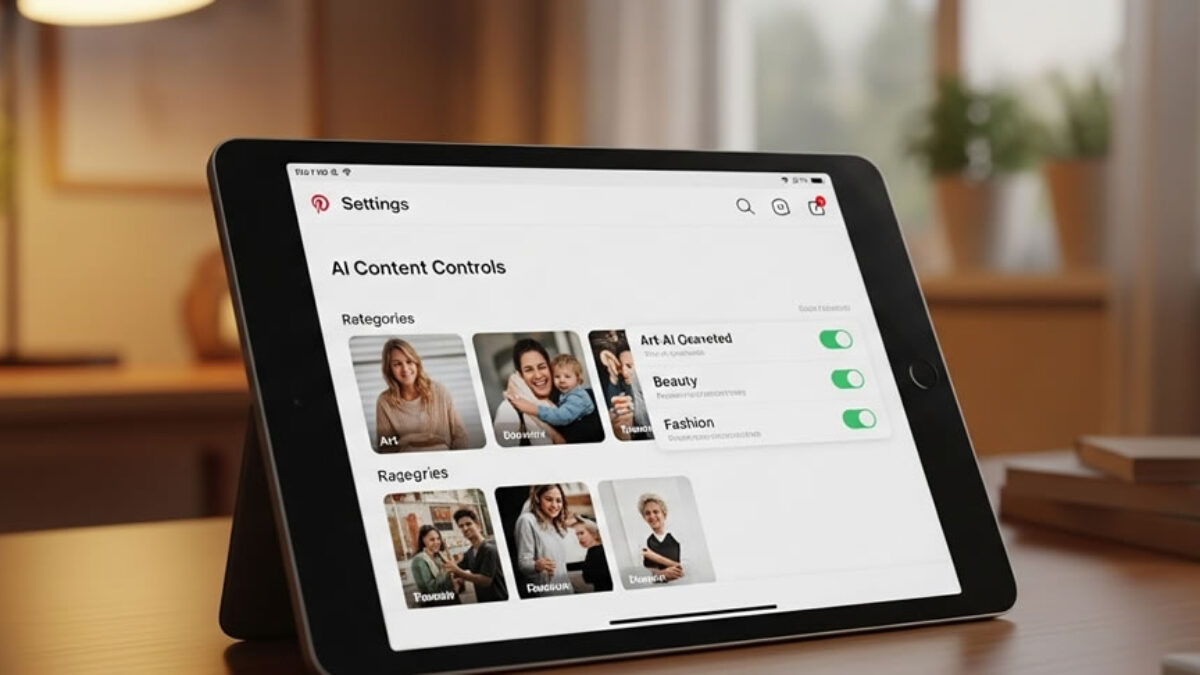Pinterest AI Slop, the popular visual discovery platform known for inspiring creativity and lifestyle ideas, is now addressing a growing concern that has been frustrating its users. AI-generated content, often referred to as AI slop. In recent months, users have increasingly noticed their feeds filling up with artificial intelligence-generated images that lack authenticity or artistic value.
This sudden rise in AI slop has led to backlash from long-time users who rely on Pinterest for genuine inspiration. To address these concerns, Pinterest has rolled out a series of new tools designed to help users control the amount of AI-generated content they see.
Understanding the Rise of AI Slop
AI slop is a term that refers to low-quality, repetitive, or misleading AI-generated content that floods online platforms. With the rapid advancement of generative AI tools, such as image and text generators, online spaces are seeing a massive increase in automatically produced material.
Stay up to date with the latest technology in TheTechCrunch. This covers artificial intelligence, mobile and web apps, modern things, cybersecurity, and general technical news. From AI’s successes to chat and generative tools. Such as smartphones, laptops, and wearables’ special reviews. TheTechCrunch gives an insight into this case.
According to Pinterest, AI-generated content now makes up around 57 percent of all material circulating on the internet. While AI technology can be used to create beautiful and imaginative visuals, it also results in a large volume of low-quality content that clutters platforms and diminishes user experience.
Pinterest, traditionally known for human creativity and authentic inspiration, has faced particular criticism because users often visit the site to find original ideas for fashion, art, home décor, and beauty. When these categories become overwhelmed with generic or unrealistic AI images, the entire experience feels less genuine and inspiring. This situation has prompted Pinterest to take significant action to restore balance to its platform.
Pinterest’s Response to the Backlash
Following public backlash and media coverage highlighting the issue. Pinterest announced new tools that give users the power to personalize their feeds. These updates allow users to limit or reduce AI-generated content in specific categories. By introducing these new customization options. Pinterest aims to ensure that users see more of what truly inspires them and less of what feels artificial or repetitive.

The new controls can be found under the “Settings” menu in the “Refine your recommendations” section. Here, users can adjust their preferences to reduce AI-generated content in categories such as art, fashion, beauty, and home décor, areas most affected by AI slop.
Pinterest has stated that more categories will be added in the future based on user feedback. This flexibility empowers users to curate a more personalized and authentic feed, aligning with Pinterest’s mission of keeping creativity at the heart of the platform.
Strengthening Transparency with AI Labels
In addition to offering more control, Pinterest is also improving transparency around AI-generated content. Earlier in the year, the company introduced AI-modified labels that appear on images suspected of being generated or altered using artificial intelligence. These labels are triggered either by metadata embedded in the image or by Pinterest’s own AI detection systems.
Pinterest plans to make these labels more visible to users in the coming weeks, ensuring that people can easily identify when they are viewing AI-generated material. This approach not only builds trust but also helps users make informed choices about what kind of content they want to engage with.
Why the AI Slop Problem Matters
The issue of AI slop extends beyond Pinterest. Across the web, platforms are grappling with the challenge of distinguishing human-made art from computer-generated content. As AI tools become more sophisticated, the differences between real and artificial creativity become harder to detect. For Pinterest, this poses a unique risk because its value depends heavily on the authenticity of user-generated ideas and imagery.
If left unchecked, the flood of AI content could undermine Pinterest’s reputation as a source of genuine inspiration. Users might begin to doubt the authenticity of the visuals they see, and brands could find it harder to connect with their audiences. In the long term, this could impact Pinterest’s growth and revenue, as advertisers depend on user trust and engagement.
A Community-Centered Approach
Pinterest’s leadership has emphasized that the platform’s community remains its top priority. Matt Madrigal, Pinterest’s Chief Technology Officer, stated that the company’s goal is to strike the right balance between human creativity and AI innovation. By giving users greater control over their feeds, Pinterest is ensuring that every individual can shape their own experience.
The new tools also make it easy for users to share feedback directly with Pinterest. If someone encounters an image that feels overly artificial or irrelevant, they can tap the three-dot menu on the Pin and mark it as unwanted AI content. This feedback helps Pinterest fine-tune its algorithms and improve the personalization of future recommendations.
Rolling Out Across Platforms
Pinterest is rolling out these new controls in stages. They are currently available on the website and Android devices, with an iOS release scheduled in the coming weeks. The company has expressed plans to expand these settings globally, reflecting its commitment to providing a consistent experience for all users.

This rollout represents more than just a simple feature update. It is part of a broader effort to preserve the creative integrity of the platform. Pinterest recognizes that user trust is built through transparency, personalization, and respect for creative expression.
The Bigger Picture: AI and the Future of Online Creativity
The challenge faced by Pinterest is a reflection of a much larger shift happening across the internet. As AI-generated content becomes more common, every major platform is being forced to rethink how to maintain quality and authenticity. Some experts believe that AI slop could eventually dominate the web if not properly managed, making it increasingly difficult to find original human-made art, writing, and photography.
Pinterest’s proactive approach may serve as a model for other companies. By focusing on user empowerment and clear labeling, Pinterest is setting a new standard for how technology platforms can integrate AI responsibly. The company’s efforts show that it is possible to embrace artificial intelligence without sacrificing creativity, originality, or user trust.
Striking the Right Balance
At its core, Pinterest’s strategy is about balance. AI tools have the potential to enhance creativity, but they must be used thoughtfully. By combining machine intelligence with human imagination, Pinterest hopes to maintain the inspiration that made it famous in the first place. Users can still enjoy the benefits of AI innovation. Such as improved image recommendations. While avoiding the overwhelming influx of low-quality or irrelevant content.
Explore a complete hub for the latest apps. Smart things and security updates online. Ranging from AI-operated solutions and automation tools. TheTechCrunch offers in-depth articles, comparisons. And specialist analysis is designed to understand the rapidly changing technology. Whether you are keen on robotics, data protection, or the latest digital trends.
This delicate balance between automation and authenticity is what will define the next chapter of online creativity. Pinterest’s actions signal a growing awareness within the tech industry that artificial intelligence, while powerful, must be carefully managed to preserve the human touch that inspires users worldwide.
TheTechCrunch: Conclusion
The rise of AI slop has challenged how digital platforms operate, but Pinterest’s response demonstrates leadership and foresight. By giving users control, improving labeling, and promoting transparency, Pinterest is taking meaningful steps to restore trust and authenticity to its platform.
These updates reaffirm the company’s commitment to supporting creativity, community, and individuality in an increasingly automated digital world. With its new tools and policies, Pinterest is not just reacting to a trend. It is setting a standard for how platforms can responsibly navigate the future of AI-driven content while keeping the human element at the center of creativity.
Here Are More Helpful Articles You Can Explore On TheTechCrunch:
- Amazon One Medical: Amazon Launches Pay-Per-Visit Virtual Healthcare Service for Kids
- Spotify SongDNA: Explore Who Makes Your Music
- Best AI Automation Tools for Small Business Growth
- Google Search and Discover Updates 2025
- Spotify Managed Accounts: A New Way for Parents to Control What Their Kids Listen To
- Oura Smart Ring: How the Tiny Wearable Is Redefining Health Tracking


